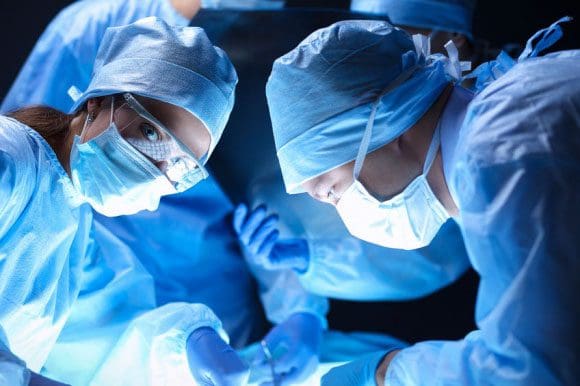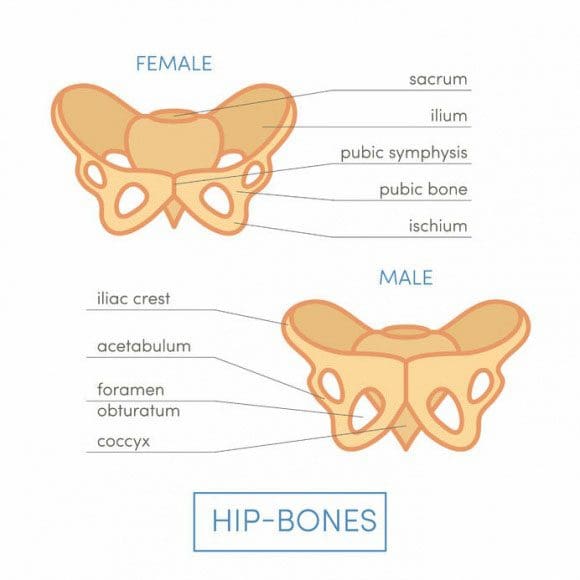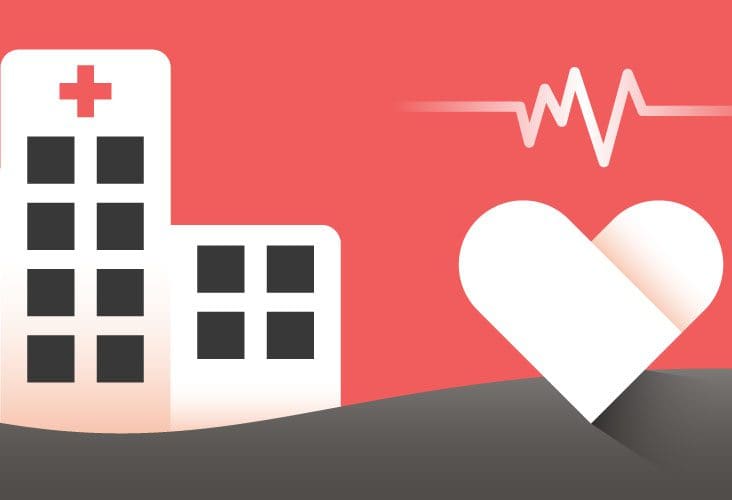A bone graft is defined as using bone-in spine fusion surgery. Spinal fusion's purpose is to link or weld bones together, in this case, the spinal bones. There are a variety of spinal conditions cause instability and pain:
- Degenerative disc disease
- Scoliosis
- Trauma from an auto accident, sports injury, slip, and fall accident
Spine surgeons use a bone graft to:
- Stop motion between two or more vertebrae
- Stabilize a spinal deformity
- Repair fractures of the spine
Spinal Fusion Stimulates New Bone Growth
A bone graft does not heal or fuse the spine instantly. Rather a bone graft sets up a foundational frame for the individual's body to generate and grow new bone. A bone graft stimulates new bone production. It is when this new bone begins to grow and solidify, that fusion takes place.
With these types of surgeries, instrumentation like screws, and rods are typically used for the beginning stabilization. But it is the actual healing of the bone that welds the vertebrae together creating long-term stability.
A bone graft can be used for structural purposes for supporting the spine, usually, this is done in place of a disc or bone that was removed. Or it can be an onlay, this means that a mass of bone fragments will grow together to stabilize the spine bridging the joint.
There are two generalized bone graft types:
- Real bone
- Substituted bone graft
Real bone can come from the patient, which is called an auto-graft or from a donor's bone, called an allograft.
The Individual's Bone or Auto-graft
An auto-graft is bone taken or harvested from the individual's body and transplanted to a specific area, in this case, the spine. An auto-graft is considered the gold standard because it is the individual's own bone, which contains:
- Bone cells
- Proteins
- Calcified matrix
These all help to stimulate the healing of the fusion. There are advantages for an auto-graft, which include a higher probability for fusion success and a lower risk for disease transmission. The only real setback for individuals of an auto-graft is the post-operative pain that usually comes with the procedure when harvesting an individuals' bone. Bone can be harvested from one of the individual's:
- Iliac crests
- Pelvic bones
- Ribs
- Spine
Bone graft harvesting creates a new set of risks. These include:
- Post-operative pain
- Nerve injury
- Surgical wound issues
Because of these risks and the possibility that the bone could be poor quality, a surgeon could decide to use another type of bone graft. When this happens a surgeon could go with what is known as a local auto-graft. This is bone harvested from the decompression itself.
These are the parts that are removed to decompress the nerves. They usually consist of bone spurs, lamina, and portions of the spinous process. These same bone pieces can be reused to assist with the fusion of the decompressed areas.
Donor Bone or Allograft
An allograft is a bone harvested from another person, usually from a tissue bank. Tissue banks harvest bone and other tissues from cadavers for medical purposes. An allograft is prepared by freezing or freeze-drying the bone or tissues. This helps limit the risk of graft rejection. Bone from an allograft does not have living bone cells and is not as effective at fusion stimulation when compared to an autograft. However, it still does work. Tissue banks:
- Screen all their donors
- Supervise bone recovery
- Test donations
- Sterilize donations
- Store for use
Look for tissue banks that are accredited by the American Association of Tissue Banks. US Food and Drug Administration has strict regulations when it comes to human cell and tissue processing. These include rules about the eligibility of donors. These guidelines/protocols help reduce the risk of tissue contamination and the spread of disease.
Bone Graft Substitute
These substitutes are man-made or are made from a manipulated version of a natural product. These alternatives are safe and can provide a solid foundation for the individual's body to grow bone. Substitutes have similar properties of human bone, which include a porous structure and proteins that stimulate healing.
Demineralized Bone Matrix - DBM
A demineralized bone matrix is an allograft that has gone through a process where the mineral content has been removed. This demineralization helps reveal bone-forming proteins like collagen, and growth factors hidden within the bone that can stimulate healing.
This procedure is often considered a bone graft extender. It is not considered a replacement. This is because its ability to fuse the human spine on its own has not been proven. DBM can be combined with the regular bone for more volume and is available in these forms:
- Chip
- Granule
- Gel
- Powder
- Putty
Ceramic-based Extenders
Ceramic-based extenders are mixed in combination with other sources of bone. This is because they consist of calcium matrix for fusion, but there are no cells or proteins to stimulate the healing process. These include:
- Calcium phosphate
- Calcium sulfate
- Bioactive glass
Ceramic-based extenders do not present a risk for disease transfer but can cause inflammation. They are available in porous and mesh forms.
Morphogenetic Protein - BMP
Different types of bone morphogenetic proteins or BMP's are used to stimulate new bone growth. These proteins are found in human bone, however, they are trace amounts. They are then produced in larger amounts through genetic engineering.
This all depends on the type of spine surgery an individual undergoes. Bone morphogenetic protein could be considered an option in promoting new bone growth along with healing fusion.








